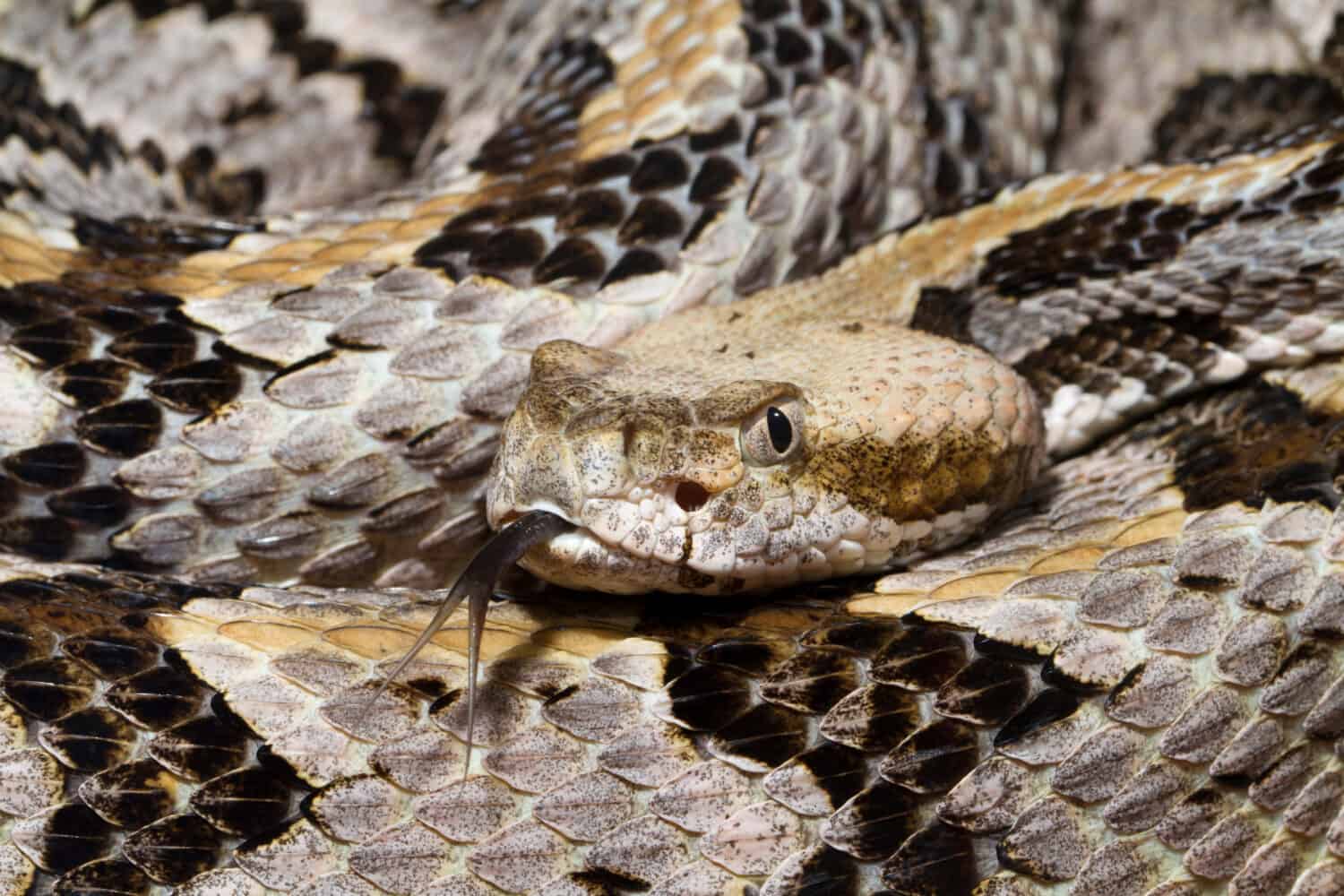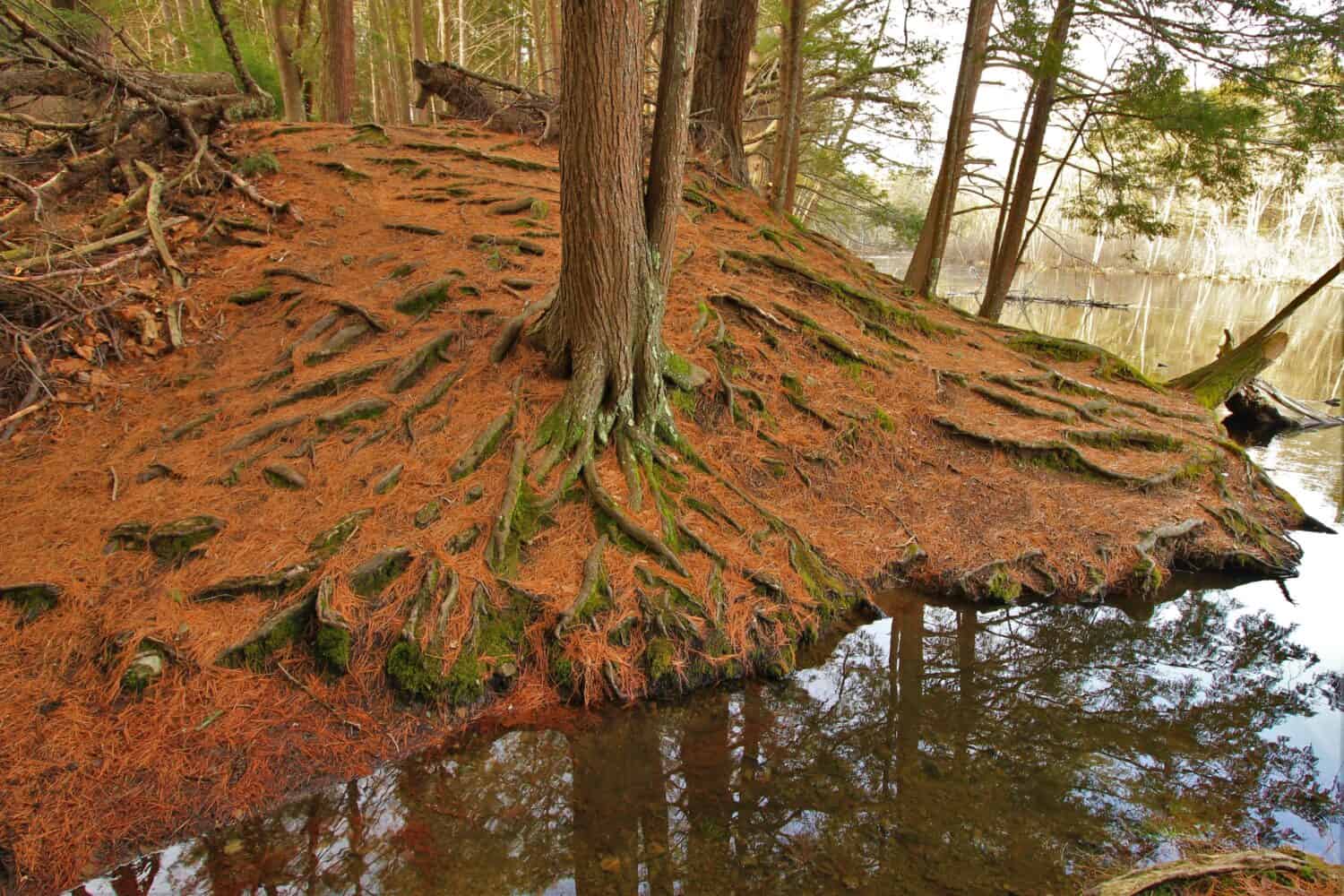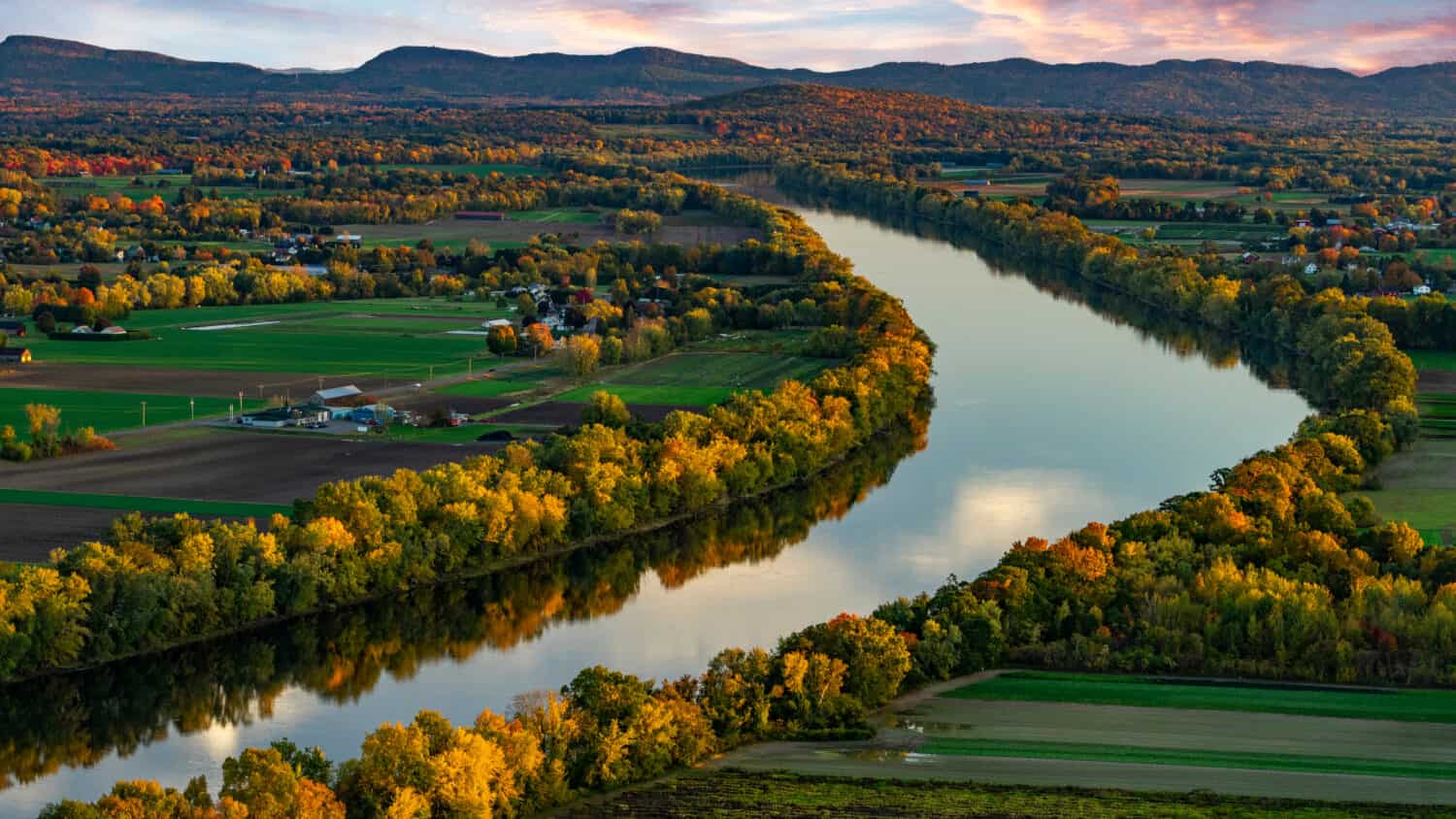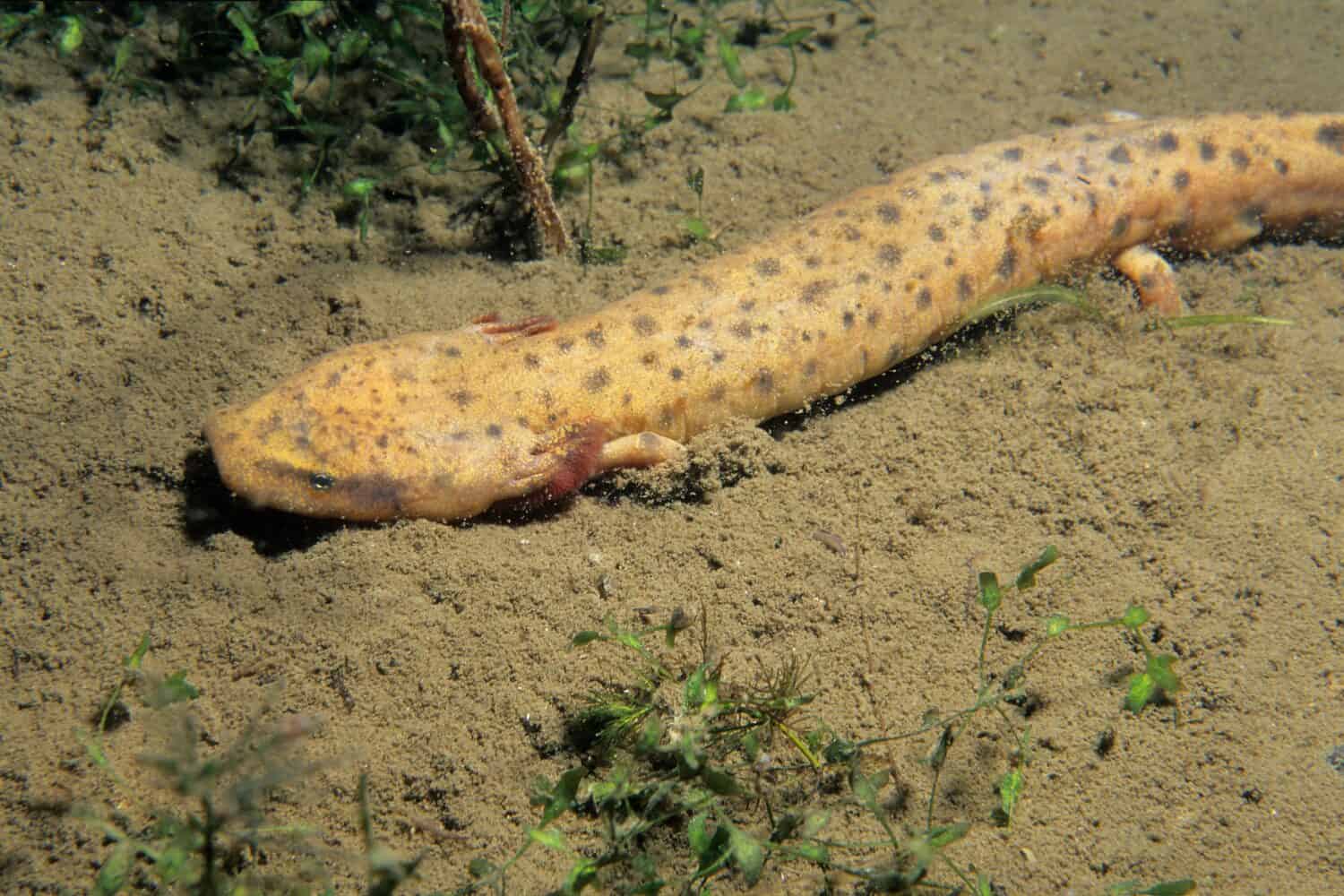With over 8,000 miles of rivers of all descriptions, Massachusetts has its fair share of habitat that is inviting to snakes. And they include a number of the Bay State’s waterways.

The timber
rattlesnake
is one of only two venomous snakes in Massachusetts.
©Mark_Kostich/Shutterstock.com
‘All Snakes Can Swim’
The presence of snakes in Massachusetts rivers is likely to vary depending on weather conditions and nearby wildlife activity. There are, however, some things that will be constant in terms of what attracts snakes to any body of water, including rivers.
Rick Roth, director of the Cape Ann Vernal Pond Team in Gloucester, Mass. spoke to A-Z Animals about those variables.
With only 14 varieties of snakes found in Massachusetts, “we’re not considered snake country here,” Roth said. While those snakes don’t require a river habitat, “just about all of them use it.” One reason, he noted is that “all snakes can swim.”
What Makes a River Desirable to a Snake?
Snakes, which need to rely on external factors to regulate their body temperatures, will be attracted to a river if they need to cool down or drink water during drought conditions.
But the biggest reason snakes will enter a river is to look for food.
“Wetlands are hotspots of activity for wildlife,” Roth said. “The more wildlife in a river means more animals will be there who eat that wildlife.”
Many rivers in Massachusetts contain abundant numbers of fish and frogs, and snakes “will certainly make good use of that habitat,” Roth told us.
“We’ve got water snakes, black racers, garter snakes, and ribbon snakes that eat one or both of those,” he added.
None of the varieties of snakes in the state are considered fully aquatic. And that includes water snakes. They have that name, Roth noted, “not because they live in the water, but because they live near the water. That’s where their food is,” he explained.
Even snakes that enjoy feasting on small mammals more than fish, such as the black rat snake (Pantherophis alleghaniensis), can be found in river habitats that are also used by rodents.
With that information in mind, which rivers in this state are you most likely to be sharing with snakes?

The banks along the Ipswich River make a perfect spot for water snakes to enter.
©Daniel Cardone/Shutterstock.com
Ipswich River
The Ipswich River, which runs within the state for 45 miles from Burlington to Ipswich, contains an abundance of fish and shellfish.
Even our herpetologist says that the Ipswich is a very good place to find water snakes!
Recreation opportunities in and around the versatile waterway include canoeing, fishing, bird watching, and miles of nature trails. The Ipswich River also provides drinking water to 330,000 residents in 15 communities.
Taunton River
It is unique in being the only major river in the region that flows freely, without obstruction or dam. The Taunton runs for 40 miles from its headwaters in Bridgewater to meet up with the Quequechan River in Fall River.
What makes the Taunton River so attractive to snakes is that it’s an excellent home for fish. The river is a prize nursery habitat for winter flounder and tautog. It’s also home to a springtime herring run, in which millions of herring swim upstream back to their birthplace to spawn. During the peak of the run, you can see thousands of herring every hour.

The Connecticut River making its way through Deerfield, Massachusetts. The river flows from the Canadian border to Long Island Sound.
©Joshua Lehew/Shutterstock.com
Connecticut River
The Connecticut is the longest river in Massachusetts, running from its northern to southern borders. It is also home to a wide variety of salamanders and frogs.
The common mudpuppy (Necturus maculosus) is a salamander introduced into the river way back in 1936. Salamanders are a favorite food of the garter snake!
Another inhabitant of the Connecticut River is the eastern spadefoot frog (Scaphiopus holbrookii). Although considered threatened, it can be found throughout most of this mighty river, which flows from the Canadian border to Long Island Sound.
Assabet River
The Bay State is also home to the amazing Assabet River that flows for 35 miles. It starts in the swampy Assabet Reservoir and ends where it meets the Sudbury River in Concord, Massachusetts.
This river flows by the 2,357-acre Assabet River National Wildlife Refuge — home to numerous varieties of frogs and salamanders that snakes love to eat.

The mudpuppy is a type of salamander that makes its home in the Connecticut River. Salamanders are a favorite food of the garter snake.
©RLS Photo/Shutterstock.com
The Most Feared Reptile
The fear of snakes, called ophidiophobia, is very common. A recent poll found that three out of 10 adults in the U.S. have a significant dread of these reptiles.
Roth says that “for the most part, snakes don’t want to have anything to do with you.”
The naturalist, who has been looking for snakes since he was five, says, “Around here, it’s almost impossible to have a bad encounter (with a snake) unless you initiate it.
“I’ve never been chased by a snake or bitten by one that I didn’t pick up,” he adds.
List of Snakes found in Massachusetts
| Common Name | Scientific Name |
|---|---|
| Black rat snake | Pantherophis alleghaniensis |
| DeKay’s brownsnake | Storeria dekayi |
| Eastern garter snake | Thamnophis sirtalis |
| Eastern black racer | Coluber constrictor |
| Eastern hognose snake | Heterodon platyrhinos |
| Eastern milk snake | Lampropeltis Triangulum |
| Eastern ribbon snake | Thamnophis sauritus |
| Eastern worm snake | Carphophis amoenus |
| Northern red-bellied snake | Storeria occipitomaculata |
| Northern water snake | Nerodia sipedon |
| Ringneck snake | Diadophis punctatus |
| Smooth greensnake | Opheodrys vernalis |
| Northern copperhead (venomous) | Agkistrodon contortrix |
| Timber rattlesnake (venomous) | Crotalus horridus |
The photo featured at the top of this post is © iStock.com/NajaShots
Discover the "Monster" Snake 5X Bigger than an Anaconda
Every day A-Z Animals sends out some of the most incredible facts in the world from our free newsletter. Want to discover the 10 most beautiful snakes in the world, a "snake island" where you're never more than 3 feet from danger, or a "monster" snake 5X larger than an anaconda? Then sign up right now and you'll start receiving our daily newsletter absolutely free.
Thank you for reading! Have some feedback for us? Contact the AZ Animals editorial team.







